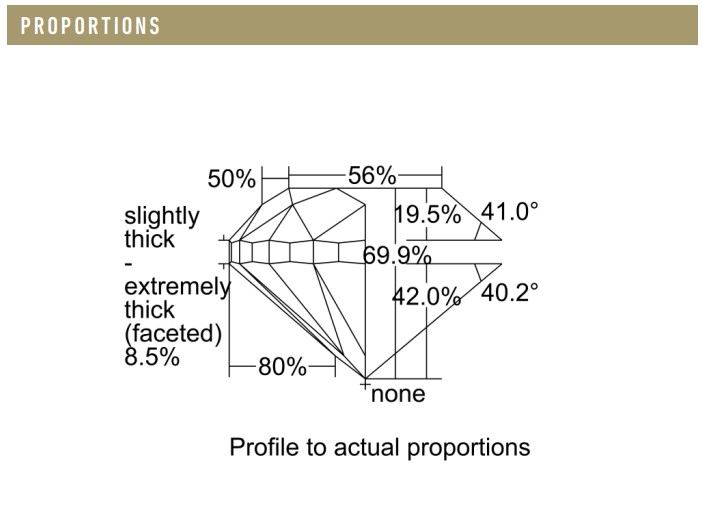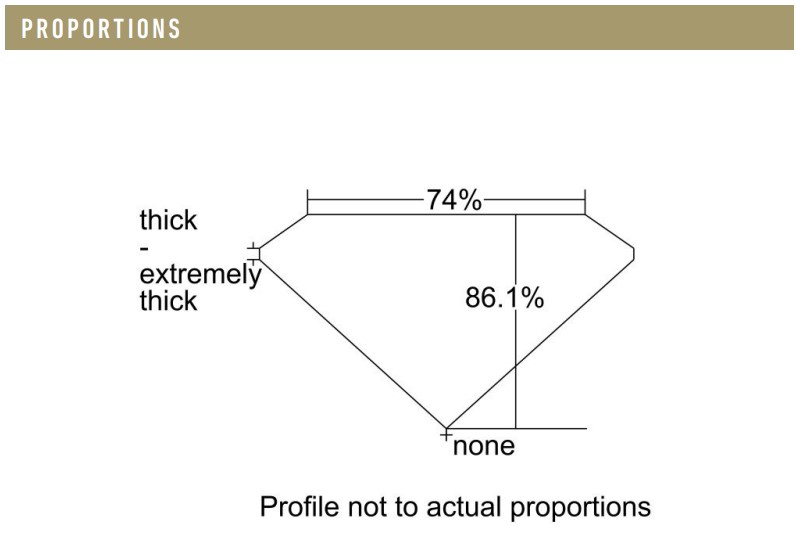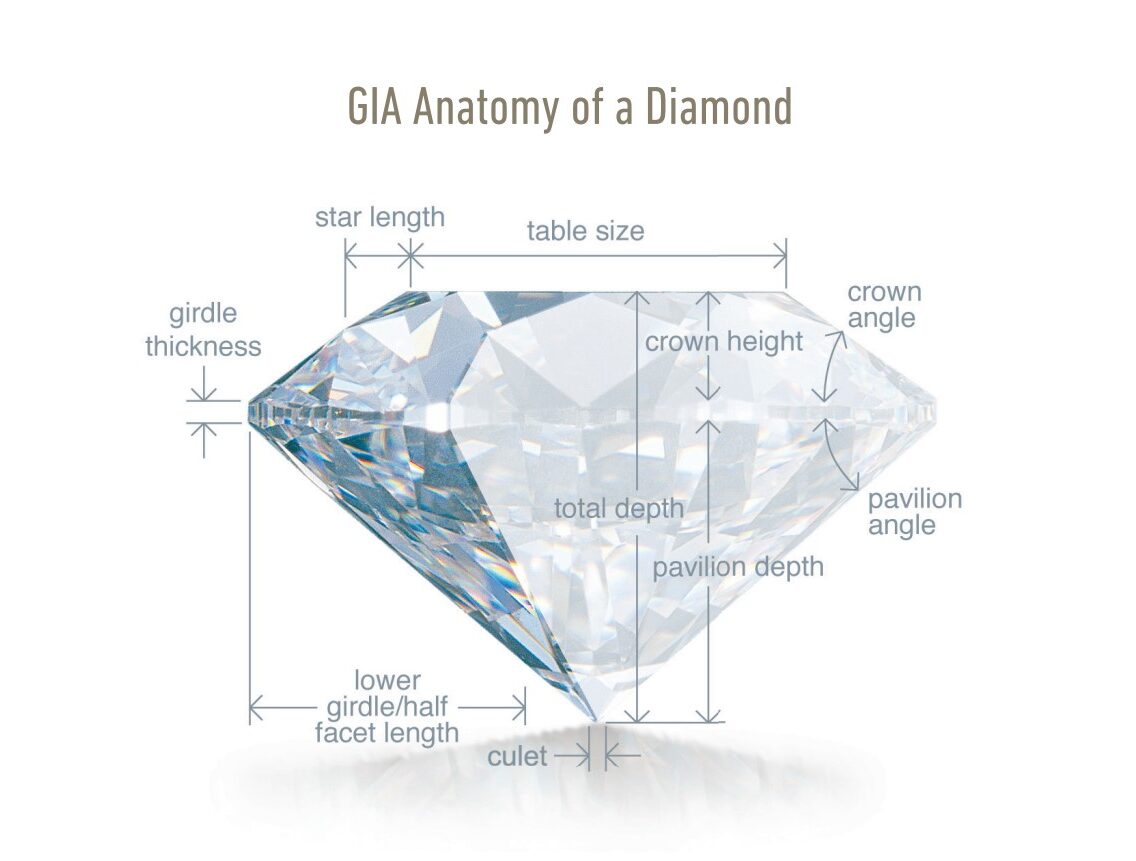Diamond Cut is Important
Is Diamond Cut Important?
The Cut of a Diamond:
The Cut of a diamond is one of the most important factors in determining the overall brilliance, fire, and scintillation of a stone. It is also one of the four Cs that depends on human craftsmanship and machines as opposed to the others three Cs that are determined by nature. Therefore, it is imperative to be familiar with all that goes into cutting an excellent cut diamond in order to make an informed decision about your purchase and maximize your budget.
Summary:
Cut is an important factor in assessing a diamond. GIA offers a cut grade for round diamonds only. AGS offers it for round and other fancy shape diamonds. GIA’s cut grade ranges from excellent to poor whereas AGS’s cut grade ranges from Ideal to Poor. Detailed information about how to assess the cut of different shapes of diamond is available on our website. For example, if you wanted to determine the cut of grade of a round cut diamond, it would be best to refer to that page on our website.
When evaluating a diamond, one of the most important aspects that you should pay attention to is the quality of its cut. The other 3 Cs (Color, Clarity and Carat) are important too, but the cut is what determines the amount of sparkle that you will get from the diamond, which is essentially the point of buying a diamond in the first place. A diamond that is properly cut will have all its facets well-proportioned and angled to reflect and refract light properly, maximizing the good effects while preventing any light from escaping prematurely through the back of the stone. A well cut stone will look brilliant and attractive while one with substandard cutting will look dull and lifeless.

Very Important Tips to to be Aware Of While Considering the Cut of a Diamond:
Some diamond cutters tend to save rough diamonds by cutting diamonds deeper. It is therefore critical to know that buying a deep cut diamond is not necessarily in your best interest. A 0.80 carat and 1 carat diamond can potentially be the same in appearance and size if the later is cut deeper. Below see some examples of deep cut diamonds.

( Deep round cut but still have received a good cut grade )

( Colorless and Flawless Princess Cut but how bad the depth is? )
The second important point to be aware of while selecting a slightly deeper cut diamond with the right proportions would be to look it at its overall dimensions in millimeters. For example, you might come a cross a round cut diamond that has 64% depth. However, it has thinner girdle and larger table size which might make up for the lost size. In order to ensure that, one of the best ways to analyze the visual appearance of a stone is to look at the dimensions of the stone in millimeters as shown below.
|
Round 1ct. (Actual Examples) Option 1) Deeply cut: 5.93-6.02×4.17mm – Table 55% Depth 68.8 Option 2) Excellent Cut: 6.57-6.59×3.92mm – 60% Table 60% Depth Option 3) Very Good Cut with 64% Depth: 6.30-6.34×4.03mm – 64% Depth 57% Table |
Princess Cut 1ct. Square (Actual Examples): Option 1) Deeply Cut: 5.03×5.01×4.00mm – 80% Table and 80% Depth Option 2) Excellent Range: 5.47×5.39×3.87mm – 70% Table and 71% Depth Option 3) Slightly Deep Cut: 5.48×5.37×4.08mm – 71% Table 76% Table. |
 What we learn from the table above is two important points 1) in round cut diamonds, slightly deeper cut diamonds will result in you getting a smaller diamond depending on the stone (see the difference in mm or millimeters between excellent cut and very cut with depth at 64%), and 2) that in fancy cut diamonds, this may not be necessarily true, you might get a slightly deeply cut diamond with the same or bigger dimensions in mm as one with ideal proportions (note: fancy cut diamonds are cut differently and GIA has not yet agreed on their ideal proportions; what we offer is our best insights on them so far). In this case, going for a slightly deeper cut fancy cut diamond with the right dimensions and good table might not be a bad idea for the right price!
What we learn from the table above is two important points 1) in round cut diamonds, slightly deeper cut diamonds will result in you getting a smaller diamond depending on the stone (see the difference in mm or millimeters between excellent cut and very cut with depth at 64%), and 2) that in fancy cut diamonds, this may not be necessarily true, you might get a slightly deeply cut diamond with the same or bigger dimensions in mm as one with ideal proportions (note: fancy cut diamonds are cut differently and GIA has not yet agreed on their ideal proportions; what we offer is our best insights on them so far). In this case, going for a slightly deeper cut fancy cut diamond with the right dimensions and good table might not be a bad idea for the right price!
This brings us to the third important point about the cut of a diamond which is about not overly emphasizing on the importance of a cut, especially if you are on a budget Cut is important, but there is barely any difference between a very good cut and an excellent cut while looking at a diamond in-person. GIA is very strict and a small glitch can through a diamond into a very good cut from an excellent range easily. Therefore, if the depth, table, and other proportions are right, do not hesitate to go for a very good cut diamond. The same advise applies while deciding on the polish and symmetry level of round and fancy cut diamonds. Excellent cut is great, but if the price bump is too much because of the cut, it is most probably not worth it.
The fourth and last point to take away is that you need to look at the cut proportions and details of each stone based on their shape. You cannot apply the instructions for selecting a round diamond into selecting a radiant cut diamond for example. Follow our guides below for each shape to know exactly what to look for and how to determine their proportions:
Round Cut Diamond, Princess Cut Diamond, Oval Cut Diamond, Cushion Cut Diamond, Emerald Cut Diamond, Radiant Cut Diamond, Marquise Cut Diamond, Pear Cut Diamond and Asscher Cut Diamond.
How is Diamond Cut Determined?
We are explaining how brilliance is determined in a diamond. The article has two sections, each of which contradicted the other section. The first section outlined ideals proportions for round and non-round cut diamonds. However, the second section of the article discussed how GIA had found that a diamond does not have to have certain rigid parameters or proportions in order to have excellent brilliance or that diamonds cut in different proportions can still obtain equal level of brilliance.
To make a long story short, the cut of a diamond is a complicated matter, and for an average consumer, it is best to go with the industry’s standards. For round cut diamonds, follow GIA’s cutting grading first. Alternatively, you can take advantage of our summarized proportions in the article referenced above.
Background:
Cut of a diamond is a very technical term. To an ordinary person with no exposure to the diamond market, it may sound something like knifing of a diamond, but it’s more than that. Cut is the character of any diamond that encompasses its symmetry, proportions and polish. Each of the above listed factors have their predominate role in shaping a diamond, hence gathered under the umbrella of a simple term called “ Cut”.
There should be no doubt in our minds about the importance of cut when buying a diamond. Cut is the most important feature of any diamond that determines its market value. Every diamond has certain facets and it’s the alignment of those facets that determine its symmetry and hence it’s cut. Polish as the word reflects is the smoothness and the shine of a diamond that demonstrate the sparkle and the attraction of the diamond. So it’s the supreme property of a diamond to reflect the light creating beautiful sparkle that can be translated into three different effects called brightness, fire and scintillations. Brightness here is the intrinsic ability of a diamond to reflect the white light. Fire is the typical rainbow effect of a diamond. Scintillation is the quantitative as well as qualitative term – quantitative since it refers to the amount of sparkle, and qualitative because it reflects the diamond’s ability to produce a striated pattern of light and dark areas caused by the reflections throughout a diamond.
Cut some times is confused for the shape of a diamond in which a raw diamond is cut. Diamonds are cut in steep, fancy or mixed cuts based off the original form of the diamond. Popularity of certain shapes, internal features/flaws of the raw diamond and preservation of carats of the diamond are a few other factors that can influence the cut of a diamond. Every diamond cutter wants to get the best final diamond product from cut with the least amount of carat waste and best brilliance with least light leakage out of a diamond.
For a customer, Cut is the hardest factor to judge out of any the 4Cs of a diamond.
The cut of a diamond is graded according to different standards. The easiest by GIA has five grades including Excellent, Very Good, Good, Fair and Poor. The higher the grade of a cut, the greater would be the value of that diamond. At the end of the day, it’s the empirical and mathematical side of the process that can conclude in a great and sparkling diamond. The technology has started to play its role and the reliance on the technical labor for the cutting process is declining with time in many parts of the world.
Credit: Sharif Khan on 16th May 2020

